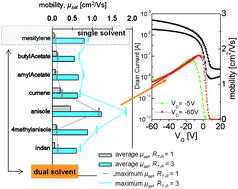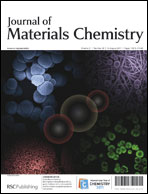Morphology control via dual solventcrystallization for high-mobility functionalized pentacene-blend thin film transistors†
Abstract
We present an approach to improving the performance of solution processed organic semiconductor transistors based on a dual solvent system. We here apply this to a blend containing the π-conjugated small molecule 6,13


 Please wait while we load your content...
Please wait while we load your content...